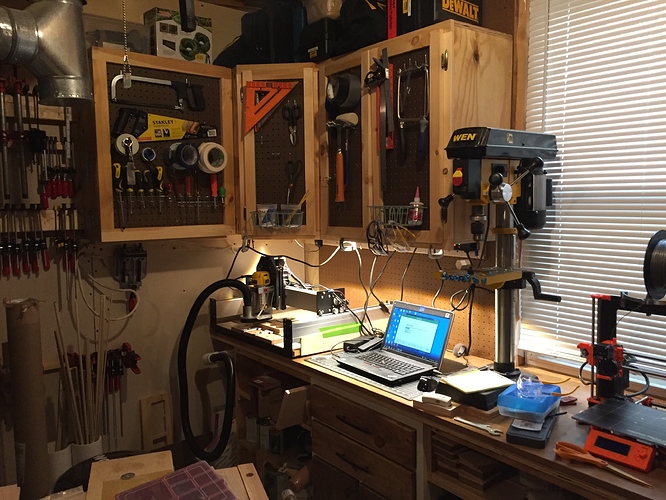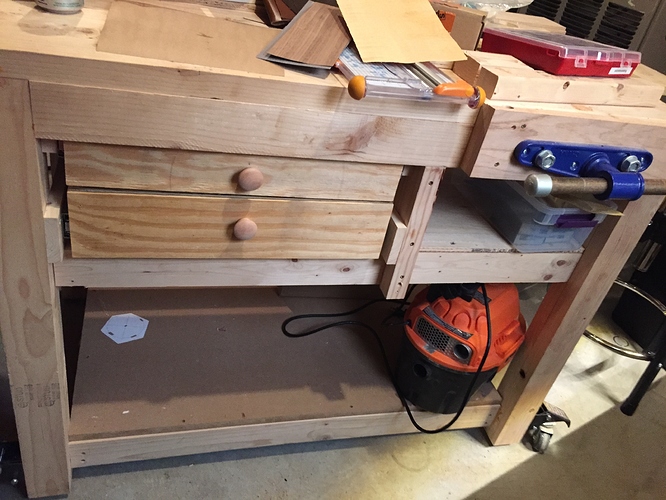Trays in slides between the joists and drop down trays (four bar linkage) between the joists are a GOOD THING. Most of my trays are labeled so I don’t need to search much. Larger and more frequently used tools (like hand planes and hand saws) are visible on hangers or shelves. Stock is, to the extent possible, visible on hooks. Smaller diameter stock (round, square, hex) and welding rods are in tubes, but, where possible, labelled or clear tubes for visibility. All between the joists
I could never go back to a finish ceiling in a shop, especially a basement with low clearance. There isn’t enough wall for this stuff, and being able to reach up and grab what I need rater then find a drawer or cabinet is so, so nice. Careful planning and a willingness to rearrange means that most tools and stock are located where I will need them.
My benches (the original point of the thread) are a nice commercial steel framed for electronics work and general small work, an old steel desk (800mm X 1800mm top) with high quality 19mm 11 ply finish plywood for a top (desk was free and plywood for the top was cheap… box store got it in and it was apparently too good for them so they sold several flats for half the price of D-grade sheathing) for general wood work… has a nice vise on it as well as a planing stop and a bunch of deck screws for stops as well.
Also have one lathe (10" atlas 48"bed) mounted on an old typing table (steel with heavy laminated top), drill presses on a modern 1250mm long bamboo top tool cabinet/bench, vises on several benches as well as on a workmate frame, and Nomad on a workmate frame with a drawer tooling chest (600 deep, 550mm wide, 80mm tall, heavy steel, drawers are 80mm wide… made for collets, I use it for small endmills and shanked drills (1/8", 3/32", 3mm and 1.5mm shank tooling, primarily) under the nomad. Also have a 650mm deep, 2000mm long layout table with a vinyl drafting surface over old school linoleum (asbestos fiber hard desktop laminate). The layout table has made me a LOT of money over the years doing work that could theoretically be done faster and cheaper by a CAD/CNC than me doing it by hand (stencil cutting, machine bolt hole layout, and so on), but the real world still makes me more economical an many cases.
Also a shaving horse, a couple sawhorses, an uncommitted classic (cast aluminum) workmate for general use, and my back patio.
I guess my point is that there are as many solutions as there are workers, and that too much effort in a particular direction, without a good feel for the work and flow, may hurt in the long run. Go simple, fast, and cheap in a functional mockup kind of way before going fancy.
A bench is a personal thing, and based on what it will be used for and who it will be used by.



